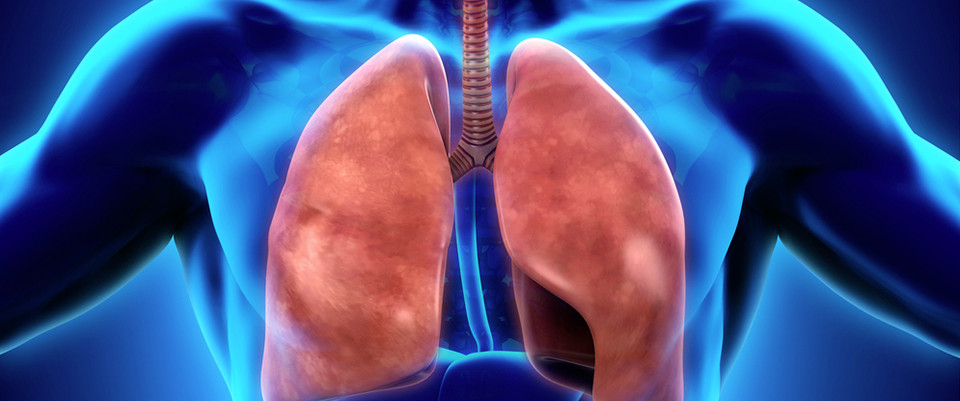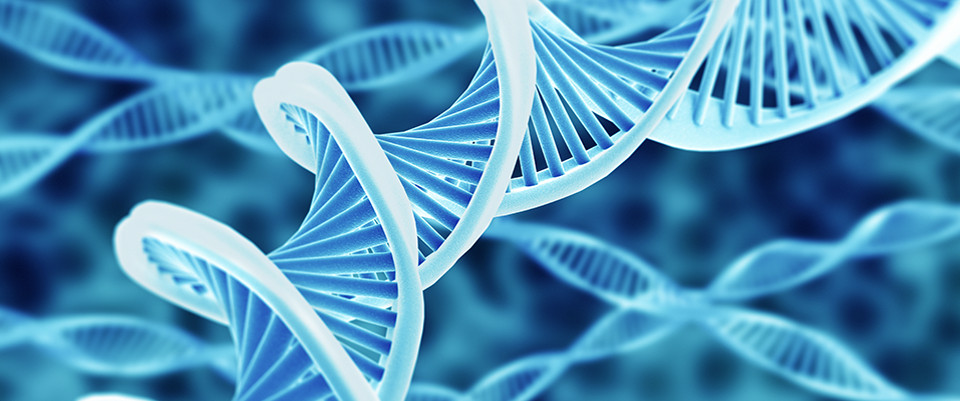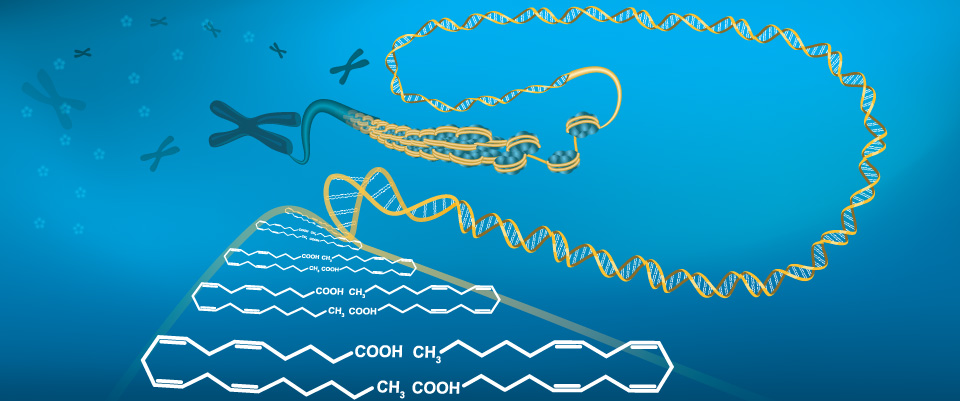PubMed
Screening of metabolic markers present in <em>Oxytropis</em> by UHPLC-Q-TOF/MS and preliminary pharmacophylogenetic investigation
Front Plant Sci. 2022 Oct 20;13:958460. doi: 10.3389/fpls.2022.958460. eCollection 2022.ABSTRACTPlants belonging to the Oxytropis genus, family Leguminosae, are found throughout the world, with about 80 species mainly distributed in northwest and northeast China. The plants have medicinal properties and many plants have been used as folk medicine for the treatment of colds, inflammation of carbuncle swelling, pain, and different types of bleeding. In recent years, due to the reduced availability of wild resources and increased clinical demand, additional Oxytropis species have been used in Mongolian medicine. This study explored the medicinal potential of four Oxytropis species, investigating their phylogeny, chemical components, and pharmacological activities. Oxytropis myriophylla (Pall) DC., Oxytropis hirta Bunge, and Oxytropis bicolor Bge. were found to be closely related at the taxonomic level. While previous investigations on the bioactive constituents of Oxytropis have been limited and have concentrated largely on flavonoids and saponins, the present study established a novel UHPLC-Q-TOF/MS based on metabolite profiling to comprehensively analyze the chemical composition of the four Oxytropis species and to identify marker compounds. A total of 75 compounds were identified from the four species, with 23 identified as characteristic marker components. Twenty-six marker compounds were identified in O. myriophylla from different geographical regions. Analysis of pharmacological activity showed that extracts of O. myriophylla and O. hirta had stronger anti-inflammatory activity than the extracts from the other species. The relationships between the chemical components, traditional curative uses, and pharmacological activities were analyzed to provide a preliminary documentation of the pharmacophylogenetic characteristics of the Oxytropis family as a whole. Several marker compounds, including licoricesaponin G2, licoricesaponin J2, and glycyrrhizic acid found in O. hirta were found to have effective anti-inflammatory activity, consistent with the traditional application of reducing swelling and healing wounds. This preliminary investigation into the pharmacophylogeny of the genus Oxytropis will contribute to the conservation and exploitation of the medicinal resources of this genus.PMID:36340402 | PMC:PMC9631219 | DOI:10.3389/fpls.2022.958460
Integrated analysis of carotenoid metabolites and transcriptome identifies key genes controlling carotenoid compositions and content in sweetpotato tuberous roots (<em>Ipomoea batatas</em> L.)
Front Plant Sci. 2022 Oct 20;13:993682. doi: 10.3389/fpls.2022.993682. eCollection 2022.ABSTRACTSweetpotato (Ipomoea batatas L.) with different depths of yellow color contains different compositions of carotenoids, which are beneficial for human health. In this study, we performed an integrated analysis of metabolomic and transcriptomic to identify key genes playing a major role in carotenoid coloration in sweetpotato tuberous roots. Herein, 14 carotenoids were identified in five sweetpotatoes. Orange-red and orange cultivars were dominated by β-carotene (385.33 μg/g and 85.07 μg/g), yellow cultivar had a high β-cryptoxanthin (11.23 μg/g), light-yellow cultivar was rich in zeaxanthin (5.12 μg/g), whereas lutein (3.34 μg/g) was the main carotenoid in white cultivar. Furthermore, 27 differentially expressed genes involved in carotenoid metabolism were identified based on comparative transcriptome. Weighted gene co-expression network analysis identified 15 transcription factors highly associated with carotenoid content in sweetpotatoes. These results provide valuable information for revealing the regulatory mechanism of carotenoid metabolism in different-colored sweetpotato tuberous roots.PMID:36340393 | PMC:PMC9632283 | DOI:10.3389/fpls.2022.993682
The genome of single-petal jasmine (<em>Jasminum sambac</em>) provides insights into heat stress tolerance and aroma compound biosynthesis
Front Plant Sci. 2022 Oct 19;13:1045194. doi: 10.3389/fpls.2022.1045194. eCollection 2022.ABSTRACTJasmine [Jasminum sambac (L.) Aiton] is a commercially important cultivated plant species known for its fragrant flowers used in the perfume industry, medicine and cosmetics. In the present study, we obtained a draft genome for the J. sambac cultivar 'Danbanmoli' (JSDB, a single-petal phenotype). We showed that the final genome of J. sambac was 520.80 Mb in size (contig N50 = 145.43 kb; scaffold N50 = 145.53 kb) and comprised 35,363 genes. Our analyses revealed that the J. sambac genome has undergone only an ancient whole-genome duplication (WGD) event. We estimated that the lineage that has given rise to J. sambac diverged from the lineage leading to Osmanthus fragrans and Olea europaea approximately 31.1 million years ago (Mya). On the basis of a combination of genomic and transcriptomic analyses, we identified 92 transcription factors (TFs) and 206 genes related to heat stress response. Base on a combination of genomic, transcriptomic and metabolomic analyses, a range of aroma compounds and genes involved in the benzenoid/phenylpropanoid and terpenoid biosynthesis pathways were identified. In the newly assembled J. sambac genome, we identified a total of 122 MYB, 122 bHLH and 69 WRKY genes. Our assembled J. sambac JSDB genome provides fundamental knowledge to study the molecular mechanism of heat stress tolerance, and improve jasmine flowers and dissect its fragrance.PMID:36340389 | PMC:PMC9627619 | DOI:10.3389/fpls.2022.1045194
Transcriptomics-metabolomics joint analysis: New highlight into the triterpenoid saponin biosynthesis in quinoa (<em>Chenopodium quinoa</em> Willd.)
Front Plant Sci. 2022 Oct 19;13:964558. doi: 10.3389/fpls.2022.964558. eCollection 2022.ABSTRACTQuinoa (Chenopodium quinoa Willd.) contains various physiologically active substances, including vitamins, polyphenols, flavonoids, phytosterols, and saponins. Research showed that saponins were the protective substances in the outer layer of quinoa seeds to defend against microbes, herbivores, and insects. Because the aglycones of quinoa saponins are triterpenoids, they are called triterpenoid saponins (TSs). In addition, the presence of TS imparted bitterness in quinoa and resulted in anticancer and anti-inflammatory effects. In this study, the seeds of low-saponin quinoa, NT376-2 (N), and high-saponin quinoa, B-12071(B), at 30 and 60 days after flowering (DAF) were used to measure the TS content and evaluated for their transcriptomic and metabolomic profiles. The amounts of TS were found to significantly differ between all possible comparisons: N and B at 30 DAF (N1_vs_B1), N and B at 60 DAF (N2_vs_B2), N at 30 DAF and 60 DAF (N1_vs_N2), and B at 30 DAF and 60 DAF (B1_vs_B2). RNA sequencing (RNA-seq) was used to screen differentially expressed genes (DEGs) and revealed 14,703 upregulated DEGs and 26,267 downregulated DEGs in the four comparison groups. The 311 overlapping DEGs found in the four comparisons were used for Gene Ontology (GO) and Kyoto Encyclopedia of Genes and Genomes (KEGG) enrichment analyses to screen for DEGs related to TS biosynthesis in quinoa. Metabolomics analysis identified acetyl-CoA, 1-hydroxy-2-methyl-2-butenyl-4-diphosphate, farnesal, and (S)-2,3-epoxysqualene as the key differentially accumulated metabolites (DAMs). Transcriptomics-metabolomics joint analysis showed that triterpenoid biosynthesis and terpenoid backbone biosynthesis were the enriched pathways of TS biosynthesis; farnesal were the key DAMs shared in the four comparison groups and associated with 10 key candidate DEGs related to TS biosynthesis in quinoa. These results provided important references for in-depth research on the metabolic mechanism of TS in quinoa.PMID:36340365 | PMC:PMC9627512 | DOI:10.3389/fpls.2022.964558
Transcriptomic and metabolomic integration as a resource in grapevine to study fruit metabolite quality traits
Front Plant Sci. 2022 Oct 20;13:937927. doi: 10.3389/fpls.2022.937927. eCollection 2022.ABSTRACTTranscriptomics and metabolomics are methodologies being increasingly chosen to perform molecular studies in grapevine (Vitis vinifera L.), focusing either on plant and fruit development or on interaction with abiotic or biotic factors. Currently, the integration of these approaches has become of utmost relevance when studying key plant physiological and metabolic processes. The results from these analyses can undoubtedly be incorporated in breeding programs whereby genes associated with better fruit quality (e.g., those enhancing the accumulation of health-promoting compounds) or with stress resistance (e.g., those regulating beneficial responses to environmental transition) can be used as selection markers in crop improvement programs. Despite the vast amount of data being generated, integrative transcriptome/metabolome meta-analyses (i.e., the joint analysis of several studies) have not yet been fully accomplished in this species, mainly due to particular specificities of metabolomic studies, such as differences in data acquisition (i.e., different compounds being investigated), unappropriated and unstandardized metadata, or simply no deposition of data in public repositories. These meta-analyses require a high computational capacity for data mining a priori, but they also need appropriate tools to explore and visualize the integrated results. This perspective article explores the universe of omics studies conducted in V. vinifera, focusing on fruit-transcriptome and metabolome analyses as leading approaches to understand berry physiology, secondary metabolism, and quality. Moreover, we show how omics data can be integrated in a simple format and offered to the research community as a web resource, giving the chance to inspect potential gene-to-gene and gene-to-metabolite relationships that can later be tested in hypothesis-driven research. In the frame of the activities promoted by the COST Action CA17111 INTEGRAPE, we present the first grapevine transcriptomic and metabolomic integrated database (TransMetaDb) developed within the Vitis Visualization (VitViz) platform (https://tomsbiolab.com/vitviz). This tool also enables the user to conduct and explore meta-analyses utilizing different experiments, therefore hopefully motivating the community to generate Findable, Accessible, Interoperable and Reusable (F.A.I.R.) data to be included in the future.PMID:36340350 | PMC:PMC9630917 | DOI:10.3389/fpls.2022.937927
Enhancing control systems of higher plant culture chambers via multilevel structural mechanistic modelling
Front Plant Sci. 2022 Oct 20;13:970410. doi: 10.3389/fpls.2022.970410. eCollection 2022.ABSTRACTModelling higher plant growth is of strategic interest for modern agriculture as well as for the development of bioregenerative life support systems for space applications, where crop growth is expected to play an essential role. The capability of constraint-based metabolic models to cope the diel dynamics of plants growth is integrated into a multilevel modelling approach including mass and energy transfer and enzyme kinetics. Lactuca sativa is used as an exemplary crop to validate, with experimental data, the approach presented as well as to design a novel model-based predictive control strategy embedding metabolic information. The proposed modelling strategy predicts with high accuracy the dynamics of gas exchange and the distribution of fluxes in the metabolic network whereas the control architecture presented can be useful to manage higher plants chambers and open new ways of merging metabolome and control algorithms.PMID:36340344 | PMC:PMC9632494 | DOI:10.3389/fpls.2022.970410
Huoxiang Zhengqi alleviates azoxymethane/dextran sulfate sodium-induced colitis-associated cancer by regulating Nrf2/NF-κB/NLRP3 signaling
Front Pharmacol. 2022 Oct 21;13:1002269. doi: 10.3389/fphar.2022.1002269. eCollection 2022.ABSTRACTColitis-associated cancer (CAC) is a subtype of inflammatory bowel disease (IBD)-associated colorectal cancer. Huoxiang Zhengqi (HXZQ) is a classical Chinese herbal medicine and has been used to treat intestinal disorders, however, anti-CAC effects and underlying mechanisms of HXZQ have not been reported. An azoxymethane/dextran sulfate sodium-induced CAC mice model was used to investigate the anti-CAC effect of HXZQ. HXZQ significantly reduced colonic inflammation, suppressed the size and number of tumors, and reduced the levels of pro-inflammatory cytokines (interleukin [IL]-1α, IL-1β, IL-6, IL-17A, IL-21, IL-23, granulocyte macrophage-colony stimulating factor, and tumor necrosis factor-α) and oxidative stress markers (reactive oxygen species and malondialdehyde), and increased the levels of anti-inflammatory cytokines (IL-10 and IL-27) in CAC mice. Intestinal microbiota and serum metabolomics analyses indicated that HXZQ altered the gut microbial composition and the abundance of 29 serum metabolites in CAC mice. Additionally, HXZQ activated the nuclear factor-erythroid factor 2-related factor 2 (Nrf2) signaling pathway and increased the levels of antioxidants such as catalase (CAT), heme oxygenase-1 (HO-1), NAD(P)H quinone oxidoreductases-1 (NQO-1), and superoxide dismutase-1 (SOD-1). HXZQ inhibited the activation of the nuclear factor kappa-B (NF-κB) signaling pathway and decreased the expression of NLR family pyrin domain containing 3 (NLRP3) by inhibiting the phosphorylation of inhibitor of nuclear factor kappa-B (IκB), inhibitor of nuclear factor kappa-B kinase (IKK), and NF-κB. In conclusion, HXZQ alleviated CAC in mice by modulating the intestinal microbiota and metabolism, activating Nrf2-mediated antioxidant response, and inhibiting NF-κB-mediated NLRP3 inflammasome activation against inflammation. The present data provide a reference for the use of HXZQ as a therapeutic or combination agent for clinical CAC treatment.PMID:36339623 | PMC:PMC9634060 | DOI:10.3389/fphar.2022.1002269
Untargeted metabolomics analysis of the hippocampus and cerebral cortex identified the neuroprotective mechanisms of Bushen Tiansui formula in an aβ<sub>25-35</sub>-induced rat model of Alzheimer's disease
Front Pharmacol. 2022 Oct 20;13:990307. doi: 10.3389/fphar.2022.990307. eCollection 2022.ABSTRACTBackground: Bushen Tiansui Formula (BSTSF) is a traditional formulation of Chinese medicine that has been used to treat Alzheimer's disease (AD) for decades; however, the underlying mechanisms by which this formula achieves such therapeutic effects have yet to be elucidated. Prupose: To investigate the neuroprotective mechanisms of BSTSF against AD by analyzing metabolite profiles in the hippocampus and cortex of AD rats. Methods: The rat models of AD were established by the injection of Aβ25-35. The Morris water maze (MWM) test was performed to evaluate the effect of BSTSF treatment on cognitive dysfunction. Hematoxylin and eosin (HE) staining was used to assess the effect of BSTSF on typical AD pathologies. Underlying mechanisms were investigated using LC-MS/MS-based untargeted metabolomics analysis of the cerebral cortex and hippocampus. Results: BSTSF significantly improved memory deficits and the typical histopathological changes of AD rats. Untargeted metabolomics analysis showed that 145 and 184 endogenous metabolites in the cerebral cortex and hippocampus, respectively, were significantly different in the BSTSF group when compared with the AD group. The differential metabolites in the cerebral cortex were primarily involved in cysteine and methionine metabolism, while those in the hippocampus were mainly involved in d-Glutamine and d-glutamate metabolism. Conclusion: In the present study, we confirmed the neuroprotective effects of BSTSF treatment against AD using a rat model. Our findings indicate that the BSTSF-mediated protective effects were associated with amelioration of metabolic disorders in the hippocampus and cerebral cortex.PMID:36339577 | PMC:PMC9630565 | DOI:10.3389/fphar.2022.990307
Action mechanism of hypoglycemic principle 9-(R)-HODE isolated from cortex lycii based on a metabolomics approach
Front Pharmacol. 2022 Oct 21;13:1011608. doi: 10.3389/fphar.2022.1011608. eCollection 2022.ABSTRACTThe 9-(R)-HODE is an active compound isolated from cortex lycii that showed significant hypoglycemic effects in our previous in vitro study. In this study, 9-(R)-HODE's in vivo hypoglycemic activity and effect on alleviating diabetic complications, together with its molecular mechanism, was investigated using a metabolomics approach. The monitored regulation on dynamic fasting blood glucose, postprandial glucose, body weight, biochemical parameters and histopathological analysis confirmed the hypoglycemic activity and attenuation effect, i.e., renal lesions, of 9-(R)-HODE. Subsequent metabolomic studies indicated that 9-(R)-HODE induced metabolomic alterations primarily by affecting the levels of amino acids, organic acids, alcohols and amines related to amino acid metabolism, glucose metabolism and energy metabolism. By mediating the related metabolism or single molecules related to insulin resistance, e.g., kynurenine, myo-inositol and the branched chain amino acids leucine, isoleucine and valine, 9-(R)-HODE achieved its therapeutic effect. Moreover, the mediation of kynurenine displayed a systematic effect on the liver, kidney, muscle, plasma and faeces. Lipidomic studies revealed that 9-(R)-HODE could reverse the lipid metabolism disorder in diabetic mice mainly by regulating phosphatidylinositols, lysophosphatidylcholines, lysophosphatidylcholines, phosphatidylserine, phosphatidylglycerols, lysophosphatidylglycerols and triglycerides in both tissues and plasma. Treatment with 9-(R)-HODE significantly modified the structure and composition of the gut microbiota. The SCFA-producing bacteria, including Rikenellaceae and Lactobacillaceae at the family level and Ruminiclostridium 6, Ruminococcaceae UCG 014, Mucispirillum, Lactobacillus, Alistipes and Roseburia at the genus level, were increased by 9-(R)-HODE treatment. These results were consistent with the increased SCFA levels in both the colon content and plasma of diabetic mice treated with 9-(R)-HODE. The tissue DESI‒MSI analysis strongly confirmed the validity of the metabolomics approach in illustrating the hypoglycemic and diabetic complications-alleviation effect of 9-(R)-HODE. The significant upregulation of liver glycogen in diabetic mice by 9-(R)-HODE treatment validated the interpretation of the metabolic pathways related to glycogen synthesis in the integrated pathway network. Altogether, 9-(R)-HODE has the potential to be further developed as a promising candidate for the treatment of diabetes.PMID:36339561 | PMC:PMC9633664 | DOI:10.3389/fphar.2022.1011608
Identification and metabolomic characterization of potent anti-MRSA phloroglucinol derivatives from <em>Dryopteris crassirhizoma</em> Nakai (Polypodiaceae)
Front Pharmacol. 2022 Oct 20;13:961087. doi: 10.3389/fphar.2022.961087. eCollection 2022.ABSTRACTTraditional Chinese medicine (TCM) has been used to treat infectious diseases and could offer potential drug leads. This study evaluates the in vitro antimicrobial activities from commercially sourced Dryopteris crassirhizoma Nakai (Polypodiaceae) whose authenticity was confirmed by DNA barcoding based on the ribulose bisphosphate carboxylase (rbcL) gene. Powdered rhizomes were sequentially extracted using n-hexane, dichloromethane, ethyl acetate, and methanol at ambient temperature. The dried extracts at different concentrations were tested for antimicrobial activities against Escherichia coli, Pseudomonas aeruginosa, Staphylococcus aureus, methicillin-resistant Staphylococcus aureus (MRSA), and Mycobacterium smegmatis. D. crassirhizoma extracts exhibited significant antimicrobial activities only against MRSA (minimum inhibitory concentration: 3.125 μg/ml n-hexane extract). Activity-led fractionations of D. crassirhizoma and characterization by ultra-performance liquid chromatography-tandem mass spectrometry (UPLC-MS/MS) targeted a fraction (A3), with two anti-MRSA phloroglucinol derivatives, flavaspidic acid AB and norflavaspidic acid AB-being greatly enriched in the latter. The impact of A3 on MRSA cells was examined using untargeted metabolomic analysis and compared to that of other established antibiotics (all treatments normalized to MIC50 at 6 h). This suggested that norflavaspidic acid AB had distinctive effects, one of which involved targeting bioenergetic transformation, metabolism, and particularly acetyl-CoA, on MRSA cells. No cytotoxicity was observed for the norflavaspidic acid AB-enriched fraction against murine HepG2 cells. This study requires further experimental validation but can have indicated a naturally available compound that could help counter the threat of clinically relevant strains with antibiotic resistance.PMID:36339560 | PMC:PMC9630833 | DOI:10.3389/fphar.2022.961087
Advancements and future prospective of DNA barcodes in the herbal drug industry
Front Pharmacol. 2022 Oct 21;13:947512. doi: 10.3389/fphar.2022.947512. eCollection 2022.ABSTRACTEthnopharmacological relevance: The past couple of decades have witnessed the global resurgence of medicinal plants in the field of herbal-based health care. Increased consumption of medicinal plants and their derivative products is the major cause of the adulteration issues in herbal industries. As a result, the quality of herbal products is affected by spurious and unauthorized raw materials. Recent development in molecular plant identification using DNA barcodes has become a robust methodology to identify and authenticate the adulterants in herbal samples. Hence, rapid and accurate identification of medicinal plants is the key to success for the herbal industry. Aim of the study: This paper provides a comprehensive review of the application of DNA barcoding and advanced technologies that have emerged over the past 10 years related to medicinal plant identification and authentication and the future prospects of this technology. Materials and methods: Information on DNA barcodes was compiled from scientific databases (Google Scholar, Web of Science, SciFinder and PubMed). Additional information was obtained from books, Ph.D. thesis and MSc. Dissertations. Results: Working out an appropriate DNA barcode for plants is challenging; the single locus-based DNA barcodes (rbcL, ITS, ITS2, matK, rpoB, rpoC, trnH-psbA) to multi-locus DNA barcodes have become the successful species-level identification among herbal plants. Additionally, multi-loci have become efficient in the authentication of herbal products. Emerging advances in DNA barcoding and related technologies such as next-generation sequencing, high-resolution melting curve analysis, meta barcodes and mini barcodes have paved the way for successful herbal plant/samples identification. Conclusion: DNA barcoding needs to be employed together with other techniques to check and rationally and effectively quality control the herbal drugs. It is suggested that DNA barcoding techniques combined with metabolomics, transcriptomics, and proteomics could authenticate the herbal products. The invention of simple, cost-effective and improved DNA barcoding techniques to identify herbal drugs and their associated products of medicinal value in a fool-proof manner will be the future thrust of Pharmacopoeial monograph development for herbal drugs.PMID:36339543 | PMC:PMC9635000 | DOI:10.3389/fphar.2022.947512
Therapeutic effect and metabolomics mechanism of <em>Patrinia Villosa</em> (Thunb.) juss on liver injury in rats
Front Pharmacol. 2022 Oct 21;13:1058587. doi: 10.3389/fphar.2022.1058587. eCollection 2022.ABSTRACTPatrinia villosa (Thunb.) Juss (P.V) is widely used in the treatment of chronic diseases, such as appendicitis, enteritis and gynecological inflammation. Modern research indicated that the herb has pharmacological effect on liver injury caused by inflammation, but the metabolomics mechanism is not clear. For the purpose of discovering the therapeutic effect and metabolomic mechanism of P.V on liver injury, 40 Sprague-Dawley (SD) rats were divided into normal group, model group, and P.V groups (0.98, 1.97, and 2.96 g/kg). The model group and P.V groups were injected intraperitoneally with 40% CCl4 (v/v, olive oil) to establish liver injury model. After administration of P.V for seven consecutive days. Therapeutic effect of P.V on liver injury rats were analyzed. P.V could decrease serum alanine aminotransferase (ALT) and aspartate aminotransferase (AST) levels of liver injury rats as a dose-dependent manner. Compared with the model group, the pathological analysis of liver tissue of P.V groups exhibit significant decrease tendency of hepatic tissue structure destruction, cytoplasmic vacuolation, cellular swelling, and inflammatory cell infiltration as a dose-dependent manner. 82 endogenous metabolites in rat serum and liver were analyzed by Ultra-high performance liquid chromatography tandem mass spectrometry (UPLC-MS/MS). 14 metabolites in serum and 26 metabolites in liver were significantly different between the P.V group (2.96 g/kg) and the model group. Metabolic pathway analysis revealed that the main pathway including alanine, aspartate and glutamate metabolism, and TCA cycle were significantly altered. It is suggested that P.V can alleviate CCl4 induced liver injury, and its effect on metabolites may be an important mechanism of action.PMID:36339542 | PMC:PMC9633866 | DOI:10.3389/fphar.2022.1058587
Huoxue Qingre decoction used for treatment of coronary heart disease network analysis and metabolomic evaluation
Front Pharmacol. 2022 Oct 20;13:1025540. doi: 10.3389/fphar.2022.1025540. eCollection 2022.ABSTRACTObjective: Network pharmacology provides new methods and references for the research of traditional Chinese medicine, but some problems remain, such as single evaluation components and index methods, imperfect relevant databases, unscientific prediction results, and lack of verification of results. Herein, we used a modified network pharmacology research method to explore the potential network analysis mechanism of Huoxue Qingre decoction in the treatment of coronary heart disease and utilized clinical trials for assessment. Methods: Based on literature research, the targets corresponding to the drug were obtained with the assistance of the TCMSP database and Swiss Target Prediction, and the target proteins were corrected using the UniProt database. The targets related to coronary heart disease was obtained through the GeneCards database. A protein-protein interaction network diagram was constructed, and a "component-intersection target" network diagram was drawn based on Cytoscape 3.6.2 software. The mapped targets were imported into the DAVID bioinformatics platform, which underwent Gene Ontology (GO) function and Kyoto Encyclopedia of Genes and Genomes (KEGG) pathway enrichment analysis, and the network pharmacology prediction results were evaluated through clinical trials. Results: We obtained 151 compounds related to Huoxue Qingre decoction, 286 genes after evaluation and deduplication, and 426 genes related to coronary heart disease. Finally, 81 common target genes were obtained with 32 pathways according to the KEGG pathway enrichment analysis. The validation results of the clinical trials showed that a total of 98 differential metabolites were found in the treatment of coronary heart disease with Huoxue Qingre decoction, involving a total of 16 metabolic pathways. Compared with the network pharmacology prediction results, it was found that only the pathways in cancer (hsa05200) were the common pathways in the top 32 signaling pathways predicted by network pharmacology. The expanded network pharmacology prediction results revealed that the sphingolipid signaling pathway (hsa04071) and prostate cancer pathway (hsa05215) matched the predicted metabolic pathways, with differential metabolites of N-oleoyl-D-sphingomyelin and 1-methyl-6-phenyl-1h-imidazole[4,5-b]pyridine-2-amine. Conclusion: Through the network analysis and metabolomic evaluation, there may be three signaling pathways that involve the Huoxue Qingre decoction in the treatment of coronary heart disease: pathways in cancer (hsa05200), sphingolipid signaling pathway (hsa04071), and prostate cancer pathway (hsa05215).PMID:36339536 | PMC:PMC9631828 | DOI:10.3389/fphar.2022.1025540
Study on the mechanism of cadmium chloride pollution accelerating skin tissue metabolism disorder, aging and inhibiting hair regeneration
Front Public Health. 2022 Oct 19;10:1035301. doi: 10.3389/fpubh.2022.1035301. eCollection 2022.ABSTRACTDrinking water contaminated by Cd2+ is one of the main pathways for Cd to enter the body. The skin barrier is destroyed when the skin is contaminated by environmental Cd2+, however, the detailed mechanism by which Cd2+ induces skin metabolic disorder, and senescence and affects hair regeneration is not completely understood. In this study, 18 C57BL/6 mice were randomly divided into a Control group, a Low-dose group, and a High-dose group with 6 mice in each group, and intragastrically administered with different concentrations of cadmium chloride once a day, respectively. After 1 month of intervention, the skin tissues on the back of mice were collected for non-targeted metabolomics analysis, and the related proteins were detected by immunofluorescence assay. Non-targeted metabolomics analysis result showed that compared with the Control group, there were 29 different metabolites, mainly including lysophospholipids, fatty acids, and bile acids, in the Low-dose group, and 39 differential metabolites in the High-dose group, in addition to the above compounds, there were more amino acid compounds, and most of the metabolites had a reduced response after administration. Immunofluorescence assay result showed that the higher the concentration of cadmium chloride led to the more obvious the proliferation inhibition and apoptosis promotion effects of skin cells, and the more significant damage to hair follicle stem cells. Thus, our findings demonstrate that cadmium chloride pollution can accelerate skin metabolism disorder, and aging and impair hair regeneration.PMID:36339210 | PMC:PMC9627278 | DOI:10.3389/fpubh.2022.1035301
An integrated strategy combining metabolomics and machine learning for the evaluation of bioactive markers that differentiate various bile
Front Chem. 2022 Oct 19;10:1005843. doi: 10.3389/fchem.2022.1005843. eCollection 2022.ABSTRACTAnimal bile is an important component of natural medicine and is widely used in clinical treatment. However, it is easy to cause mixed applications during processing, resulting in uneven quality, which seriously affects and harms the interests and health of consumers. Bile acids are the major bioactive constituents of bile and contain a variety of isomeric constituents. Although the components are structurally similar, they exhibit different pharmacological activities. Identifying the characteristics of each animal bile is particularly important for processing and reuse. It is necessary to establish an accurate analysis method to distinguish different types of animal bile. We evaluated the biological activity of key feature markers from various animal bile samples. In this study, a strategy combining metabolomics and machine learning was used to compare the bile of three different animals, and four key markers were screened. Quantitative analysis of the key markers showed that the levels of Glycochenodeoxycholic acid (GCDCA) and Taurodeoxycholic acid (TDCA) were highest in pig bile; Glycocholic acid (GCA) and Cholic acid (CA) were the most abundant in bovine and sheep bile, respectively. In addition, four key feature markers significantly inhibited the production of NO in LPS-stimulated RAW264.7 macrophage cells. These findings will contribute to the targeted development of bile in various animals and provide a basis for its rational application.PMID:36339047 | PMC:PMC9627196 | DOI:10.3389/fchem.2022.1005843
Serum metabolic profiling of targeted bile acids reveals potentially novel biomarkers for primary biliary cholangitis and autoimmune hepatitis
World J Gastroenterol. 2022 Oct 21;28(39):5764-5783. doi: 10.3748/wjg.v28.i39.5764.ABSTRACTBACKGROUND: Primary biliary cholangitis (PBC) and autoimmune hepatitis (AIH) are two unexplained immune diseases. The golden standard for diagnosis of these diseases requires a liver biopsy. Liver biopsy is not widely accepted by patients because of its invasive nature, and atypical liver histology can confuse diagnosis. In view of the lack of effective diagnostic markers for PBC and AIH, combined with the increasingly mature metabolomics technologies, including full-contour metabolomics and target.AIM: To determine non-invasive, reliable, and sensitive biochemical markers for the differential diagnosis of PBC and AIH.METHODS: Serum samples from 54 patients with PBC, 26 patients with AIH and 30 healthy controls were analyzed by Ultra-high performance liquid chromatography-tandem mass spectrometry serum metabolomics. The metabolites and metabolic pathways were identified, and the metabolic changes, metabolic pathways and inter-group differences between PBC and AIH were analyzed. Fifteen kinds of target metabolites of bile acids (BAs) were quantitatively analyzed by SRM, and the differential metabolites related to the diagnosis of PBC were screened by receiver operating characteristic curve analysis.RESULTS: We found the changes in the levels of amino acids, BAs, organic acids, phospholipids, choline, sugar, and sugar alcohols in patients with PBC and AIH. Furthermore, the SRM assay of BAs revealed the increased levels of chenodeoxycholic acid, lithocholic acid (LCA), taurolithocholic acid (TLCA), and LCA + TLCA in the PBC group compared with those in the AIH group. The levels of BAs may be used as biomarkers to differentiate PBC from AIH diseases. The levels of glycochenodeoxycholic acid, glycochenodeoxycholic sulfate, and taurodeoxycholic acid were gradually elevated with the increase of Child-Pugh class, which was correlated with the severity of disease.CONCLUSION: The results demonstrated that the levels of BAs could serve as potential biomarkers for the early diagnosis and assessment of the severity of PBC and AIH.PMID:36338890 | PMC:PMC9627419 | DOI:10.3748/wjg.v28.i39.5764
Comparative transcriptome and metabolome analysis reveal key regulatory defense networks and genes involved in enhanced salt tolerance of <em>Actinidia</em> (kiwifruit)
Hortic Res. 2022 Aug 25;9:uhac189. doi: 10.1093/hr/uhac189. eCollection 2022.ABSTRACTThe Actinidia (kiwifruit) is an emerging fruit plant that is severely affected by salt stress in northern China. Plants have evolved several signaling network mechanisms to cope with the detrimental effects of salt stress. To date, no reported work is available on metabolic and molecular mechanisms involved in kiwifruit salt tolerance. Therefore, the present study aims to decipher intricate adaptive responses of two contrasting salt tolerance kiwifruit species Actinidia valvata [ZMH (an important genotype), hereafter referred to as R] and Actinidia deliciosa ['Hayward' (an important green-fleshed cultivar), hereafter referred to as H] under 0.4% (w/w) salt stress for time courses of 0, 12, 24, and 72 hours (hereafter refered to as h) by combined transcriptome and metabolome analysis. Data revealed that kiwifruit displayed specific enrichment of differentially expressed genes (DEGs) under salt stress. Interestingly, roots of R plants showed a differential expression pattern for up-regulated genes. The KEGG pathway analysis revealed the enrichment of DEGs related to plant hormone signal transduction, glycine metabolism, serine and threonine metabolism, glutathione metabolism, and pyruvate metabolism in the roots of R under salt stress. The WGCNA resulted in the identification of five candidate genes related to glycine betaine (GB), pyruvate, total soluble sugars (TSS), and glutathione biosynthesis in kiwifruit. An integrated study of transcriptome and metabolome identified several genes encoding metabolites involved in pyruvate metabolism. Furthermore, several genes encoding transcription factors were mainly induced in R under salt stress. Functional validation results for overexpression of a candidate gene betaine aldehyde dehydrogenase (AvBADH, R_transcript_80484) from R showed significantly improved salt tolerance in Arabidopsis thaliana (hereafter referred to as At) and Actinidia chinensis ['Hongyang' (an important red-fleshed cultivar), hereafter referred to as Ac] transgenic plants than in WT plants. All in all, salt stress tolerance in kiwifruit roots is an intricate regulatory mechanism that consists of several genes encoding specific metabolites.PMID:36338850 | PMC:PMC9630968 | DOI:10.1093/hr/uhac189
Functional significance of ion channels during macropinosome resolution in immune cells
Front Physiol. 2022 Oct 20;13:1037758. doi: 10.3389/fphys.2022.1037758. eCollection 2022.ABSTRACTMacropinocytosis is a unique type of endocytosis accompanied by membrane ruffle formation. Closure of membrane ruffles leads to the uptake of large volumes of fluid phase and, subsequently, the formation of large vacuoles termed macropinosomes. Immune cells, such as dendritic cells, T cells, and macrophages, endocytose the surrounding amino acids and pathogens via macropinocytosis either constitutively or in a stimulus-dependent fashion. This process is critical for cell migration, mammalian target of rapamycin complex 1 (mTORC1) activation, and antigen presentation. Large vacuoles are fragmented into tubules and smaller vesicles during the progression and maturation of macropinosomes in immune cells. This process is called "macropinosome resolution" and requires osmotically driven shrinkage of macropinosomes, which is controlled by ion channels present in them. The crenation of membranes on shrunken macropinosomes is recognized by curvature-sensing proteins and results in intracellular membrane trafficking. In this mini review, we highlight the recent progress in research on macropinosome resolution in macrophages, with a focus on ion channels (TPC1/2 for Na+ and TMEM206 for Cl-) that is required for macropinosome resolution. We also discuss the potential contribution of membrane lipids to this process.PMID:36338503 | PMC:PMC9630563 | DOI:10.3389/fphys.2022.1037758
4'-phosphopantetheine acts as a potential antioxidant to limit atherosclerotic plaque formation by inhibiting ROS generation
Front Physiol. 2022 Oct 21;13:989105. doi: 10.3389/fphys.2022.989105. eCollection 2022.ABSTRACTCoronary heart disease (CHD) is caused by coronary atherosclerosis and has a high morbidity and mortality rate worldwide. There are challenges in both early screening and treatment of CHD. The appearance and development of CHD is a complex metabolic disorder process. Therefore, to search for new biomarkers of CHD, we analyzed the peripheral blood metabolome in patients with CHD. In the study, a plasma metabolite, 4'-Phosphopantetheine (4-PPanSH), which was discovered by HPLC-MS/MS, as peripheral blood 4-PPanSH decreases, the degree of coronary blockage gradually aggravates. In addition, the 4-PPanSH supplement limited atherosclerotic plaque formation and endothelial injury in mice. Further, in vascular endothelial cells, 4-PPanSH effectively inhibited ROS generation and ox-LDL accumulation. In summary, 4-PPanSH was associated with the degree of coronary stenosis, and the 4-PPanSH supplement reduced atherosclerotic plaque generation, which could be associated with 4-PPanSH acting as a potent antioxidant that inhibits ROS generation and alleviates vascular endothelial injury.PMID:36338497 | PMC:PMC9634529 | DOI:10.3389/fphys.2022.989105
A clinicians' review of the respiratory microbiome
Breathe (Sheff). 2022 Mar;18(1):210161. doi: 10.1183/20734735.0161-2021. Epub 2022 Apr 5.ABSTRACTThe respiratory microbiome and its impact in health and disease is now well characterised. With the development of next-generation sequencing and the use of other techniques such as metabolomics, the functional impact of microorganisms in different host environments can be elucidated. It is now clear that the respiratory microbiome plays an important role in respiratory disease. In some diseases, such as bronchiectasis, examination of the microbiome can even be used to identify patients at higher risk of poor outcomes. Furthermore, the microbiome can aid in phenotyping. Finally, development of multi-omic analysis has revealed interactions between the host and microbiome in some conditions. This review, although not exhaustive, aims to outline how the microbiome is investigated, the healthy respiratory microbiome and its role in respiratory disease.EDUCATIONAL AIMS: To define the respiratory microbiome and describe its analysis.To outline the respiratory microbiome in health and disease.To describe future directions for microbiome research.PMID:36338247 | PMC:PMC9584600 | DOI:10.1183/20734735.0161-2021











